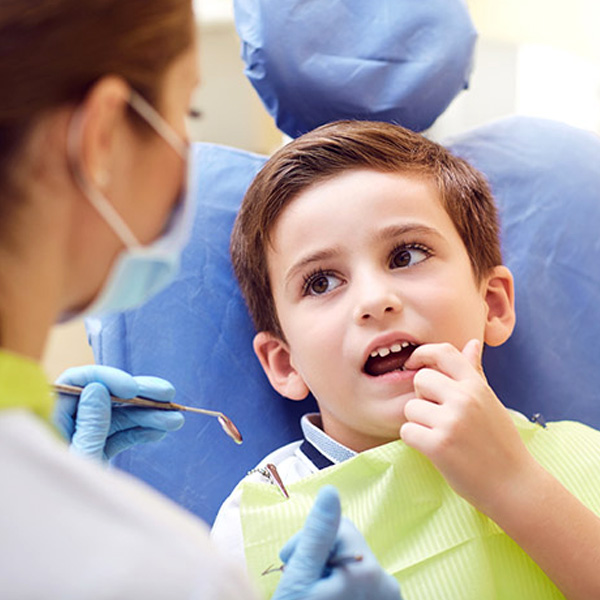

Baby teeth are meant to be lost so that the incoming adult teeth can erupt without issue. Most of the time, baby teeth are lost naturally. However, sometimes baby teeth need to be pulled -- this can be due to advanced decay, or to make room for the incoming adult tooth to avoid crowding and misalignment. If your child has a tooth extracted, they can experience pain and sensitivity for a few days after the procedure. Follow these tips to keep your child’s mouth clean – and pain free – after they’ve had a tooth pulled.
The day of the extraction, only serve your child soft foods that require little or no chewing. The socket and the area surrounding it will be very sensitive, and chewing firm foods can cause them pain and discomfort. Food that can be eaten with a spoon like mashed potatoes, soup, scrambled eggs, yogurt, apple sauce or pancakes are perfect to serve them in the 24 hours following their pulled tooth. Try to make sure their food isn’t too hot or cold, since their gums will be very sensitive to extreme temperatures.
For up to 24 hours after the extraction, the newly exposed socket is incredibly sensitive. To avoid losing the healthy blood clot, make sure your child doesn’t use a straw during this period. The suction created when slurping can cause the clot to dislodge, and lead to more bleeding. Additionally, they should not vigorously swish any liquids as this can also cause the clot to come loose.
Your child may have swollen cheeks in the days immediately following their tooth extraction. A good way to ease your child’s pain and fight swelling is by using an ice pack every 2 – 3 hours, or as needed. Have your child wrap an ice pack in a thin towel or cloth, and apply it to the affected area for 15 minutes at a time.
After 24 hours, it’s ok to begin using a warm saltwater rinse to clean their exposed socket. You can make a saltwater rinse by combining 8 oz of warm water with 1 teaspoon of salt. Have your child gently swish the saltwater in their mouth for 30 seconds before spitting it out. Saltwater rinses clean their mouth and help ease pain in the affected area. this period. The suction created when slurping can cause the clot to dislodge, and lead to more bleeding. Additionally, they should not vigorously swish any liquids as this can also cause the clot to come loose.
It’s important that your child does not touch the newly exposed area so that it can remain clean. They should avoid touching or picking at the extraction area so that don’t introduce any germs into the area and prolong the healing process.
Your child’s mouth will be very sensitive for a few days after the extraction, but they should continue brushing their teeth twice a day for 2 minutes at a time. They should be more gentle than usual, and avoid brushing the extraction site all together to prevent unnecessary bleeding. They should also continue flossing normally while being careful around the extraction site.
As pediatric dentists, we understand the importance of proper tooth spacing for incoming adult teeth. If your child has adult teeth arriving directly behind their baby teeth, then visit our office. We will assess their mouth and determine whether or not a tooth extraction would benefit their overall oral health. We aim to make the process as friendly and painless as possible. At Brighton Kids Smile, we offer nitrous oxide, or laughing gas, to our patients in order to have them feel more at ease and calm during their treatments. We’ll guide you through the days and weeks following the extraction and monitor the health of the newly pulled tooth in a series of checkups.
